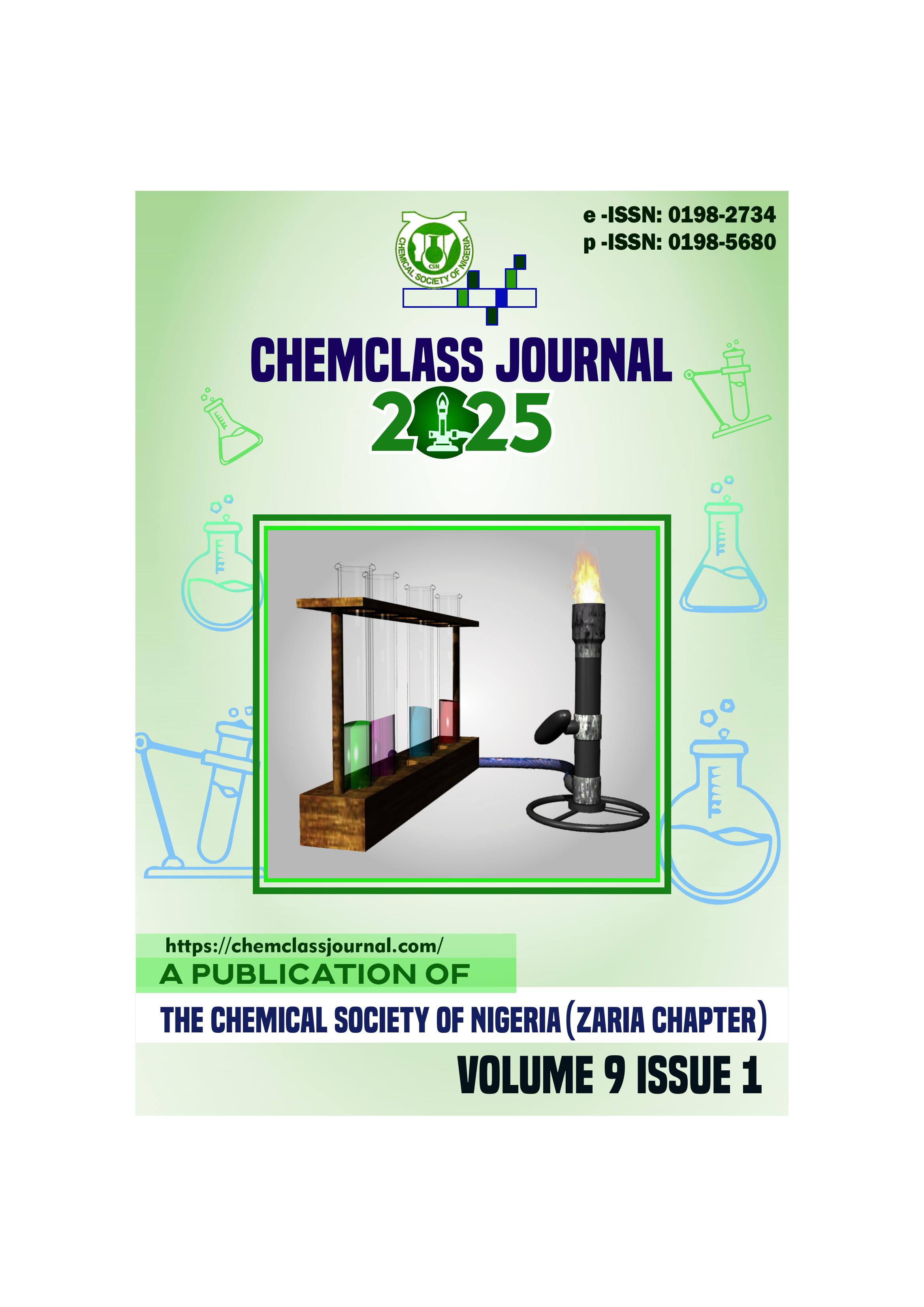Synthesis of Sulphonated Carbon- Base Catalyst from Detarium senegalense Shell for Transesterification of Detarium senegalense Seed Oil
DOI:
https://doi.org/10.33003/Keywords:
Detarium senegalense , Box-Behnken Design , Sulphonated carbon-based catalystAbstract
This study focuses on the synthesis of a sulfonated carbon-based catalyst from Detarium senegalense shells
for the transesterification of Detarium senegalense seed oil. The catalyst was prepared by carbonizing the
shells at 700°C for 3 hours, followed by sulfonation with 98% sulphuric acid at 150°C for 3 hours. The
Box-Behnken Design (BBD) was used to optimize the catalyst synthesis process, yielding optimal
conditions of a solid-to-acid ratio of 1:15(w/v), a reaction time of 2.502 hours, and a temperature of
120.523°C. The performance of the catalyst was evaluated in the transesterification of Detarium
senegalense seed oil. The synthesized sulfonated solid acid catalysts were characterized by acid-base back
titration for the determination of total acid density, Fourier transform infrared spectroscopy (FT-IR), X-ray
diffraction (XRD), Scanning electron microscopy (SEM) and X-ray energy dispersion spectroscopy (EDS).
Oil extraction from the seeds was optimized using BBD, with optimal conditions determined as 5 hours,
80.001 mL of solvent, and 15g of substrate. The extracted Detarium senegalense seed oil was characterized
by its acid value (0.57 mg KOH/g), iodine value (70 g/100 g of I₂), FT-IR, and other physical properties,
including density, specific gravity, and kinematic viscosity. The catalyst achieved a 78% conversion of free
fatty acids in the transesterification reactions. Kinetic studies revealed an oil extraction rate constant of 0.63
and an activation energy (Ea) of 235. kJ/mol.





 ChemClass Journal
ChemClass Journal
